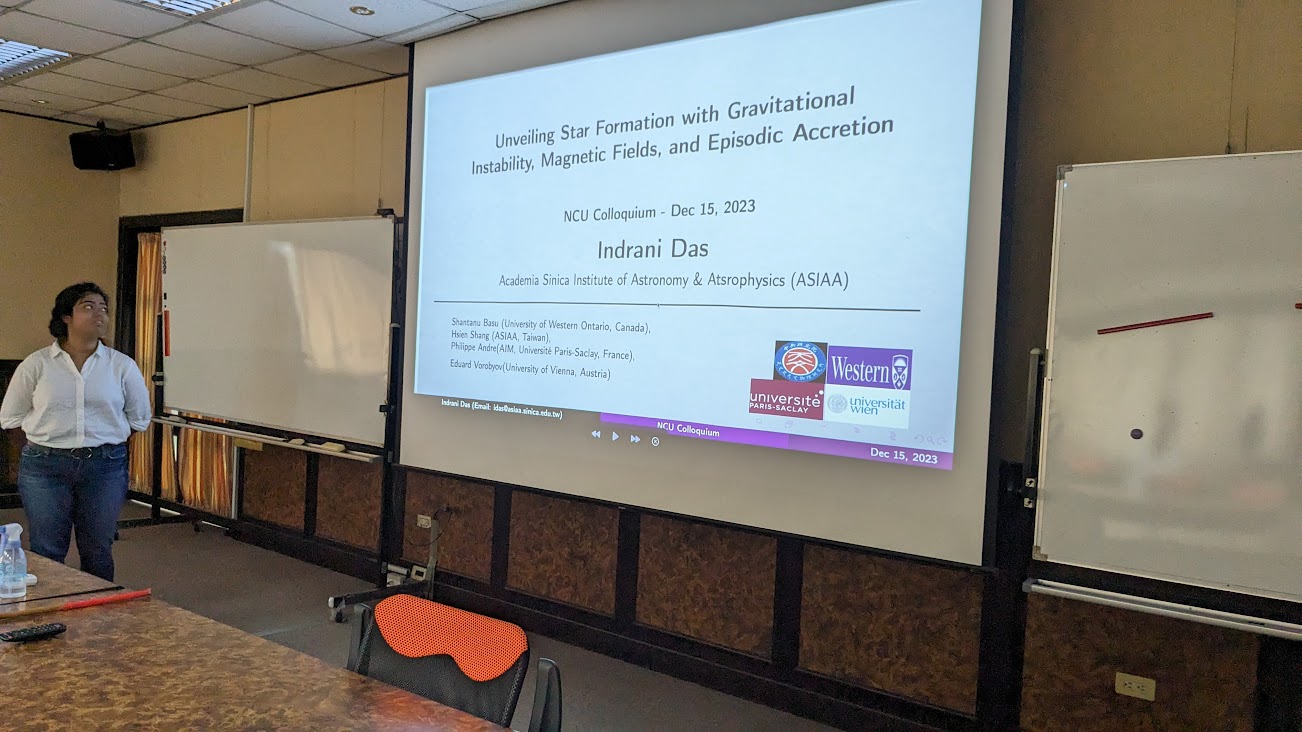Dr. Indrani Das (ASIAA)

"Unveiling Star Formation with Gravitational Instability, Magnetic Fields, and Episodic Accretion"
時間/地點: 2023-12-15 14:00 [S4-1013]
摘要:
The formation of protostars and protostellar disks primarily result from the complex interaction between magnetic fields, gravity and angular momentum. In order to understand disk/clump formation and subsequent evolution, the non-ideal magnetohydrodynamic (MHD) effects are substantially key features. In this first part of my presentation, I will talk about the fragmentation scales of gravitational instability of a rotationally-supported self-gravitating protostellar disk using linear perturbation analysis in the presence of two nonideal MHD effects: Ohmic resistivity and ambipolar diffusion. Our results show that molecular clouds exhibit a preferred lengthscale for collapse that depends on mass-to-flux ratio, magnetic diffusivities, and the Toomre-Q parameter. In addition, the influence of the magnetic field on the preferred mass for collapse leads to a modified threshold for the fragmentation mass, as opposed to a Jeans mass, that might lead to giant planet formation in the early embedded phase. Furthermore, we apply the nonideal MHD threshold for fragmentation scales to fit the data of prestellar core lifetimes and as well as the number of enclosed cores formed in a clump, as found with the observations of Herschel and Submillimeter Array (SMA), respectively. Our results show that the gravitational fragmentation scales include the effects beyond that set by thermal pressure alone. In the next half, I will also talk about the episodic mass accretion from disk-to-star that yields the mass growth of protostars. Our self-developed analytic formalism of episodic mass accretion (therefore episodic luminosity) from a protostellar disk to star for specified density and velocity profiles that emerge from the isothermal runaway collapse of a prestellar cloud core. Our analytic work provides insight into global magnetohydrodynamic simulations of protoplanetary disks. Using the numerical simulations we explore the difference between purely GI driven bursts with a more complex burst process in which GI triggers bursts at small radii that are driven by the magnetorotational instability (MRI). The latter may also provide insights into planetesimal formation and the chain of observed knots in molecular jets.
回上一頁